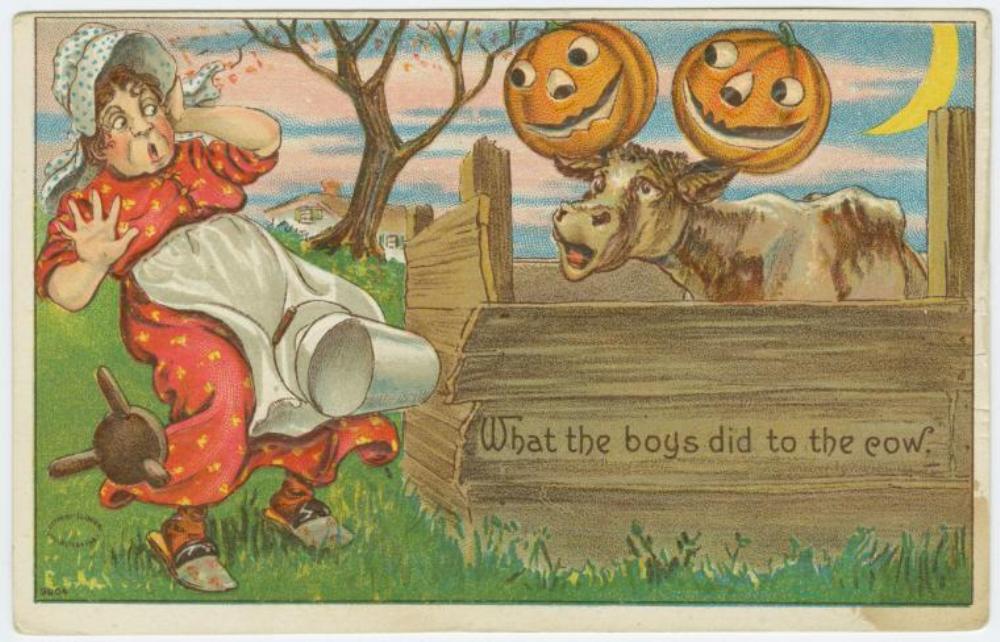The Evolution of Halloween Mischief in America
Khái niệm cốt lõi
Halloween mischief in America evolved from harmless pranks to dangerous mayhem, leading to a movement for a safer holiday.
Tóm tắt
In early 19th-century America, Halloween was a night filled with pranks and anarchy, but as urbanization increased, mischief turned into mayhem. The movement to make Halloween safer for children led to the tradition of trick-or-treating we know today. The evolution of Halloween from mischievous acts to organized celebrations showcases how societal changes shaped this holiday over time.
When Halloween Mischief Turned to Mayhem | Essay | Zócalo Public Square
Thống kê
Kids strung ropes across sidewalks to trip people in the dark.
Two hundred boys in Washington, D.C., used bags of flour to attack well-dressed folks on streetcars in 1894.
Halloween candy and costume profits hit $300 million in 1965.
Trích dẫn
"Kids pulled fire alarms, threw bricks through shop windows, and painted obscenities on the principal’s home."
"Some grown-ups began to fight back."
"Halloween is still seen as a day to cause mischief, to mock authority, and make the haves give to the have-nots."
Thông tin chi tiết chính được chắt lọc từ
by lúc www.zocalopublicsquare.o... 10-26-2017
https://www.zocalopublicsquare.org/2017/10/26/halloween-mischief-turned-mayhem/ideas/essay/
Yêu cầu sâu hơn
How did the transition from Halloween mischief to organized celebrations impact community dynamics?
The transition from Halloween mischief to organized celebrations had a significant impact on community dynamics. As pranks and mischief turned into mayhem, leading to destructive behaviors in urban centers, adults began to push back against these activities. This shift led to efforts to make Halloween a safer and more constructive holiday for children, ultimately resulting in the popularization of trick-or-treating as a way for kids to engage with their communities in a positive manner. Organized celebrations helped foster a sense of unity among neighbors, encouraged generosity through giving out treats, and created opportunities for community members to come together and participate in festive activities.
What role did urbanization play in transforming Halloween traditions?
Urbanization played a crucial role in transforming Halloween traditions by intensifying the nature of pranks and mischief associated with the holiday. As Americans moved into crowded urban centers during the early 20th century, Halloween pranking took on a new edge with kids engaging in more destructive behaviors such as pulling fire alarms or throwing bricks through windows. The anonymity provided by city living allowed for increased acts of vandalism and rebellion against authority figures. This shift towards more aggressive behavior prompted adults to seek ways to reinvent Halloween as a safer celebration focused on children's enjoyment rather than causing chaos.
How does the evolution of Halloween pranks reflect broader societal changes?
The evolution of Halloween pranks reflects broader societal changes by showcasing shifts in attitudes towards authority, community values, and entertainment preferences over time. Initially rooted in Celtic superstitions about spirits roaming free during Samhain, early American pranksters engaged in mischievous acts that targeted local grumps or property owners within close-knit communities where everyone knew each other well. However, as society modernized and urbanized, leading to increased social issues like poverty and segregation, pranksters began targeting larger institutions like schools or businesses as expressions of rebellion against authority figures.
Furthermore, efforts by adults post-World War II aimed at curbing destructive behavior during Halloween signaled changing perceptions around public safety concerns and moral responsibilities towards youth engagement. The gradual shift towards organized celebrations like trick-or-treating reflected society's desire for structured festivities that promoted unity among neighbors while providing safe outlets for children's creativity during the holiday season.
0
